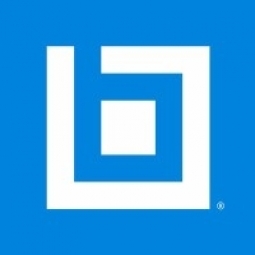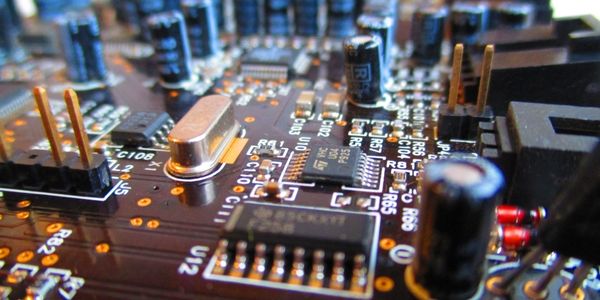Customer Company Size
Mid-size Company
Region
- America
Country
- United States
Product
- Bluebeam Revu
- Bluebeam Studio
Tech Stack
- CAD
- Microsoft Excel
Implementation Scale
- Enterprise-wide Deployment
Impact Metrics
- Productivity Improvements
- Cost Savings
- Revenue Growth
Technology Category
- Application Infrastructure & Middleware - Data Exchange & Integration
Applicable Industries
- Construction & Infrastructure
- Electronics
Applicable Functions
- Discrete Manufacturing
- Procurement
Use Cases
- Predictive Maintenance
- Inventory Management
Services
- Software Design & Engineering Services
- System Integration
About The Customer
Interstate Electrical is a regional, family-owned, commercial electrical contractor with offices in all six New England states. Founded in 1966 by Pat Alibrandi and currently led by his son Jim Alibrandi, Interstate aspires to be a different kind of electrical contracting company — one where individual talent and determination is encouraged and rewarded and one that is equally customer-centric. From a value-add services standpoint, Interstate Electrical tackles everything from Fortune 500-level projects to fit-ups for startups, using design-build and design-assist services with an in-house team of professional engineers and electrical designers. New builds, ground-up restorations and BIM coordination are all hallmarks of the firm’s duties, along with fire alarm installation, testing and monitoring, arc flash hazard analysis, infrared testing, network data cabling, and process and building controls installations. The firm had previously been doing prefabrication at a small level for the past 20 years, but after dedicating themselves to lean processes and creating the value stream map, prefabrication and preconstruction became integral parts of its project delivery model.
The Challenge
Interstate Electrical, a regional, family-owned, commercial electrical contractor, was facing several challenges in their project delivery process. The company was relying on paper drawings, emails, and spreadsheets for project delivery, which was not efficient or scalable. The estimation process was done using a combination of wheel-and-paper process, Microsoft Excel, and other software, resulting in a slow, bulky process that often led to costly errors and rework. Change orders were done with side-by-side paper comparison, taking valuable time and resources for item verification and quantities. As-built drawings could not be accurately scaled, leaving time-consuming manual verifications and room for error. Cut sheets faced a similar problem with no standardization options to accurately send information to the prefab team. Markups were made on physical drawings and presented problems: there were multiple copies, notes were hard to read and accuracy was not optimal. CAD detailers were used to create drawings for markups, resulting in a costly and time-consuming back and forth verification process that also mismanaged CAD time and use.
The Solution
Interstate Electrical chose to augment existing software solutions with Bluebeam Revu to digitize and simplify these workflows while aligning and disseminating accurate project information across its teams. Bluebeam Studio Sessions would also be used to keep the Interstate Electrical design-build engineering group, design-assist group, estimating group, prefab operation center, as well as project managers and field installers all on the same page during their respective paths toward project success. Interstate Electrical also uses its own custom Tool palette within Revu to standardize its own markups, with the added ability to also get counts without having to use additional pieces of software. Going digital with Revu has also improved estimation, thanks not only to the Studio Sessions for vendors but also the accuracy of measurements within the digital environment.
Operational Impact
Quantitative Benefit

Case Study missing?
Start adding your own!
Register with your work email and create a new case study profile for your business.
Related Case Studies.

Case Study
Remote Temperature Monitoring of Perishable Goods Saves Money
RMONI was facing temperature monitoring challenges in a cold chain business. A cold chain must be established and maintained to ensure goods have been properly refrigerated during every step of the process, making temperature monitoring a critical business function. Manual registration practice can be very costly, labor intensive and prone to mistakes.

Case Study
IoT System for Tunnel Construction
The Zenitaka Corporation ('Zenitaka') has two major business areas: its architectural business focuses on structures such as government buildings, office buildings, and commercial facilities, while its civil engineering business is targeted at structures such as tunnels, bridges and dams. Within these areas, there presented two issues that have always persisted in regard to the construction of mountain tunnels. These issues are 'improving safety" and "reducing energy consumption". Mountain tunnels construction requires a massive amount of electricity. This is because there are many kinds of electrical equipment being used day and night, including construction machinery, construction lighting, and ventilating fan. Despite this, the amount of power consumption is generally not tightly managed. In many cases, the exact amount of power consumption is only ascertained when the bill from the power company becomes available. Sometimes, corporations install demand-monitoring equipment to help curb the maximum power demanded. However, even in these cases, the devices only allow the total volume of power consumption to be ascertained, or they may issue warnings to prevent the contracted volume of power from being exceeded. In order to tackle the issue of reducing power consumption, it was first necessary to obtain an accurate breakdown of how much power was being used in each particular area. In other words, we needed to be able to visualize the amount of power being consumed. Safety, was also not being managed very rigorously. Even now, tunnel construction sites often use a 'name label' system for managing entry into the work site. Specifically, red labels with white reverse sides that bear the workers' names on both sides are displayed at the tunnel work site entrance. The workers themselves then flip the name label to the appropriate side when entering or exiting from the work site to indicate whether or not they are working inside the tunnel at any given time. If a worker forgets to flip his or her name label when entering or exiting from the tunnel, management cannot be performed effectively. In order to tackle the challenges mentioned above, Zenitaka decided to build a system that could improve the safety of tunnel construction as well as reduce the amount of power consumed. In other words, this new system would facilitate a clear picture of which workers were working in each location at the mountain tunnel construction site, as well as which processes were being carried out at those respective locations at any given time. The system would maintain the safety of all workers while also carefully controlling the electrical equipment to reduce unnecessary power consumption. Having decided on the concept, our next concern was whether there existed any kind of robust hardware that would not break down at the construction work site, that could move freely in response to changes in the working environment, and that could accurately detect workers and vehicles using radio frequency identification (RFID). Given that this system would involve many components that were new to Zenitaka, we decided to enlist the cooperation of E.I.Sol Co., Ltd. ('E.I.Sol') as our joint development partner, as they had provided us with a highly practical proposal.

Case Study
Splunk Partnership Ties Together Big Data & IoT Services
Splunk was faced with the need to meet emerging customer demands for interfacing IoT projects to its suite of services. The company required an IoT partner that would be able to easily and quickly integrate with its Splunk Enterprise platform, rather than allocating development resources and time to building out an IoT interface and application platform.

Case Study
Bridge monitoring in Hamburg Port
Kattwyk Bridge is used for both rail and road transport, and it has played an important role in the Port of Hamburg since 1973. However, the increasing pressure from traffic requires a monitoring solution. The goal of the project is to assess in real-time the bridge's status and dynamic responses to traffic and lift processes.









